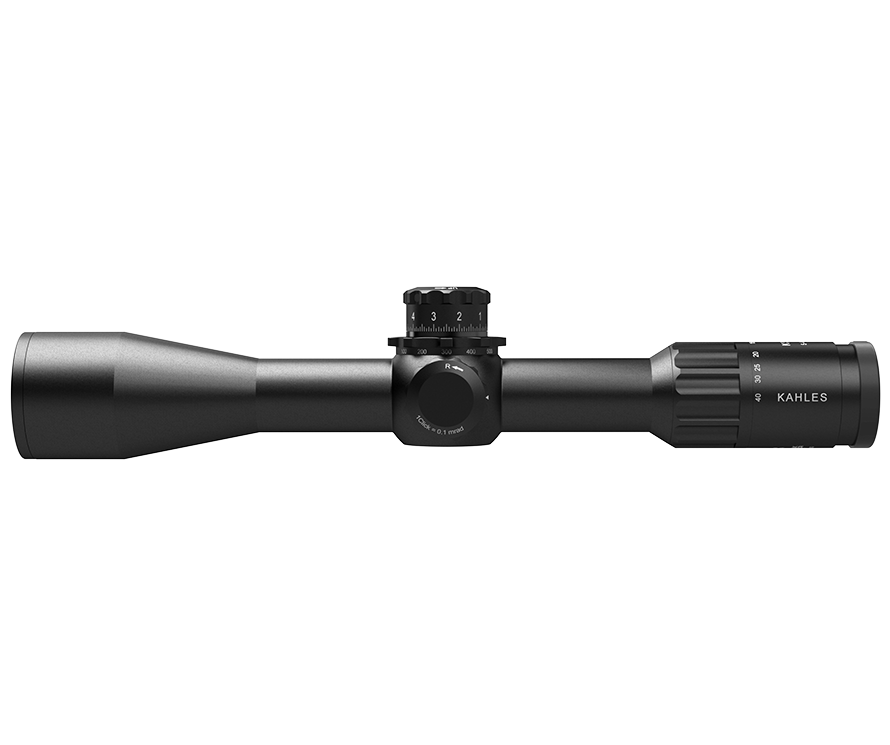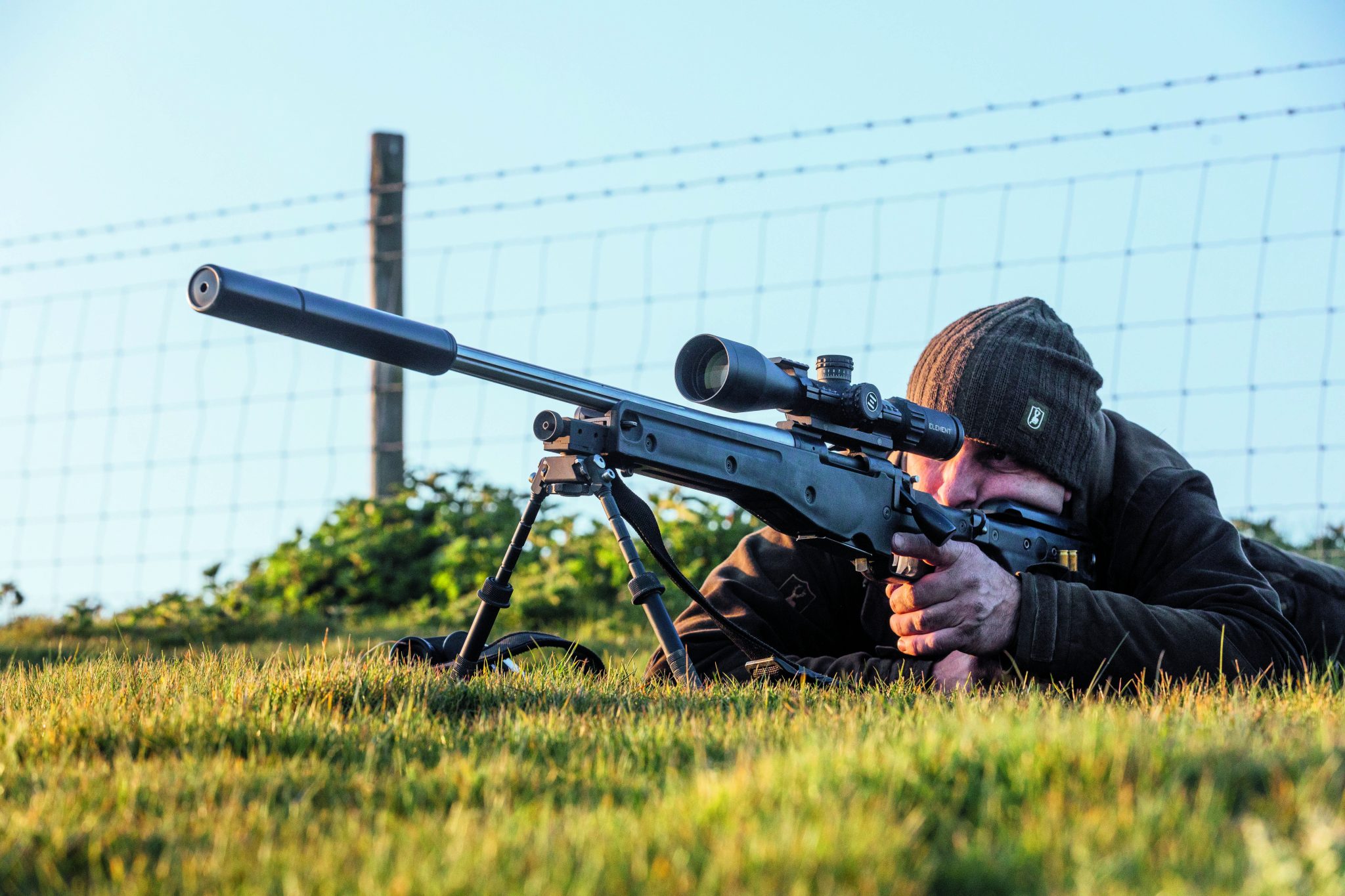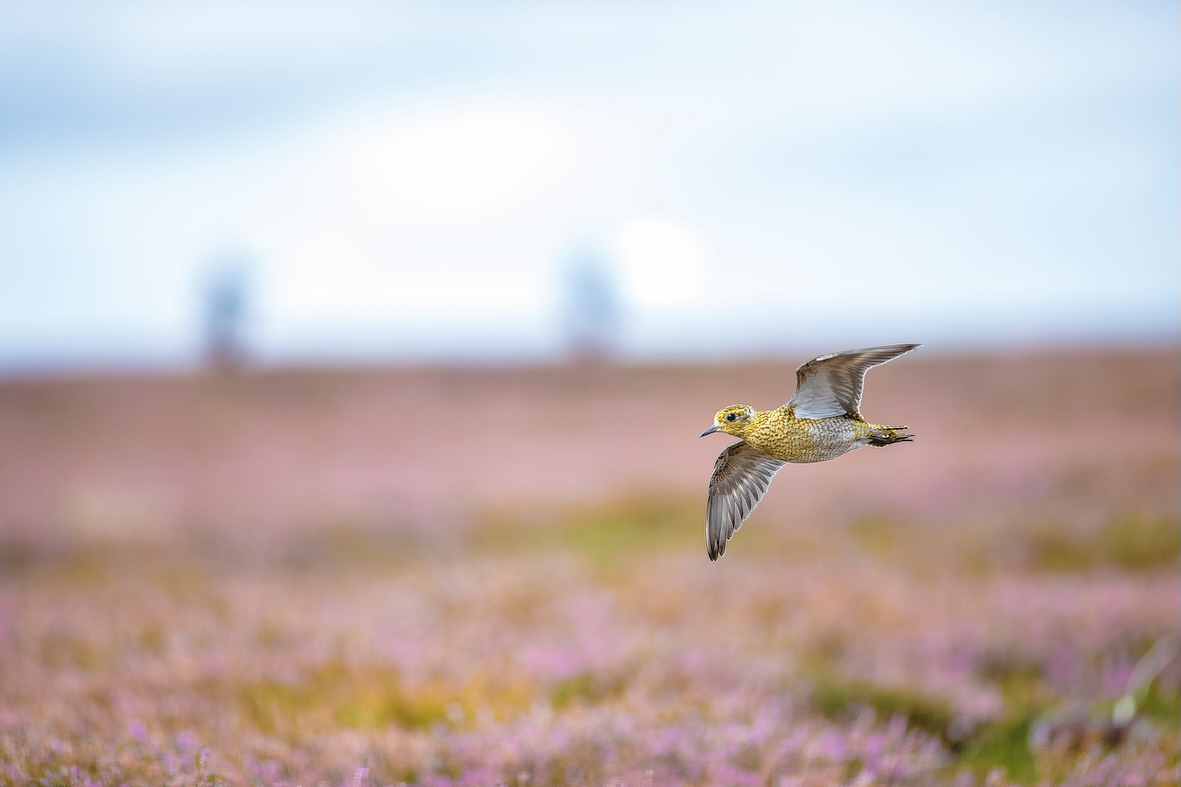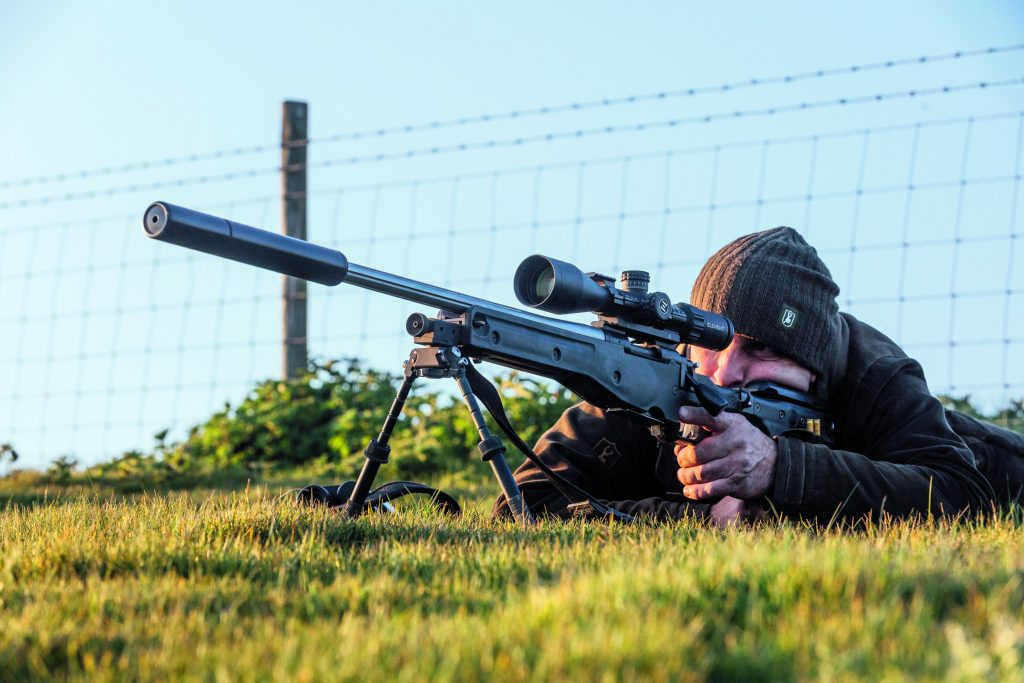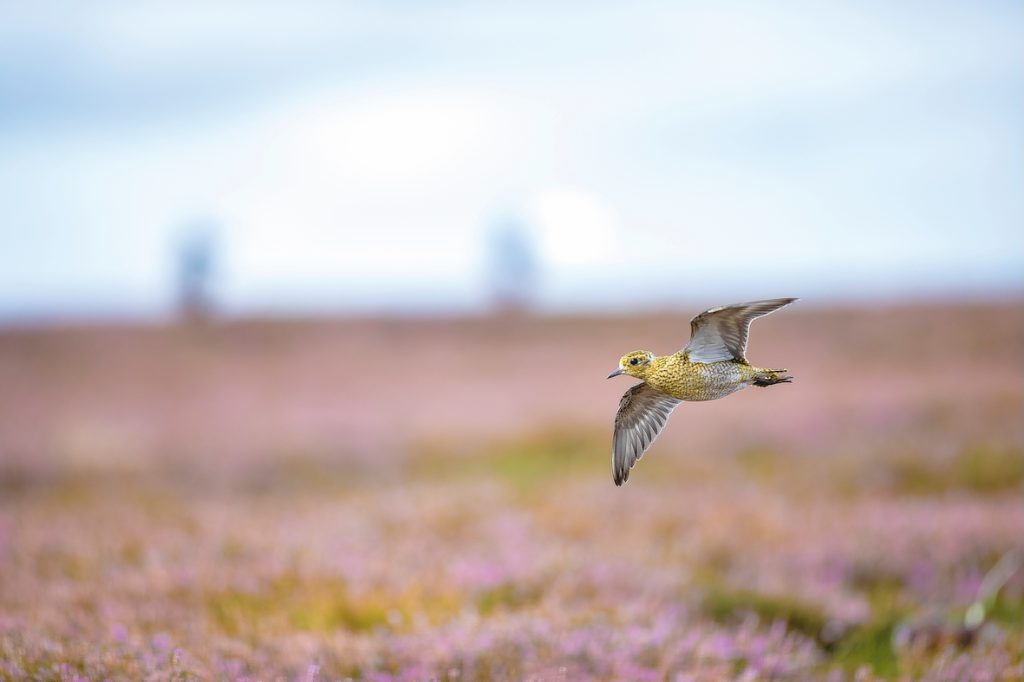News
That snipe is toast
Would you like to speak to our readers? We offer sponsored articles and advertising to put you in front of our audience. Find out more.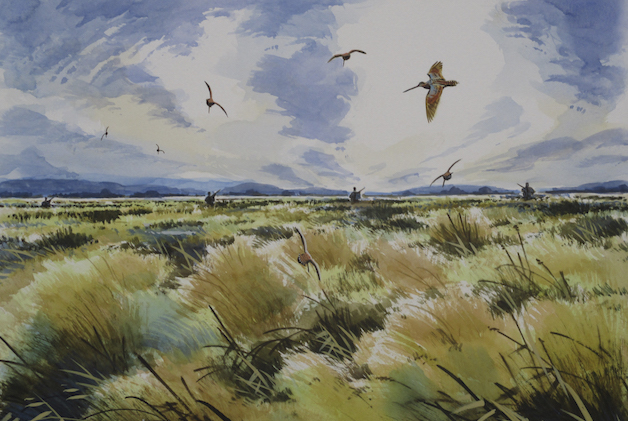 Walked up
Walked up
Springbok!” I couldn’t help but chant the word a few times in front of my friend Tom. England had just lost the Rugby World Cup final. As a lad from Essex, Tom’s accent was clear. Unfortunately for Tom, we were in deepest, darkest west Wales, where the rugby fans never miss a chance to torment an Englishman, despite our team being trounced by New Zealand just 24 hours earlier.
Ollie, Tom’s six-year-old brother, couldn’t care less about the rugby and was already next door scoffing bacon sandwiches and his Halloween chocolates. Today was going to be his first proper outing on a marsh, so he needed proper fuel. Ollie was bouncing with excitement as he carried game bags and cartridge boxes to the car. Our job was to keep him this way for as long as possible — no easy task as the rain and wind whipped off the Atlantic. Despite the weather, we were all secretly bouncing with excitement. When the weather is this rough, it adds something hard to describe to the day. Some sort of primeval man-versus-nature feeling is aroused. Every step, let alone bird, is earned. I’m not sure Poppy, our oldest Labrador, felt the same way though.
Olympian
As the other dogs bounded out into the elements, she looked at us questioningly. Never had the car boot seemed so cosy. Soon, we were joined by the final member of our team, Richard. Compared with our scruffy marsh clothes, Richard looked the business. He is a former Olympic skeet Shot and his gun was the subject of considerable envy, with its custom thumb grip and adjustable stock. As if that weren’t enough, he was also sporting a cowboy-style hat covered with woodcock pin feathers.
He delivered his usual bone-crushing handshake and we hatched a plan. Our aim was to intercept some wigeon once the tide had pushed them off the windswept estuary. The sound of waves crashing into the headland rumbled away in the distance and we hoped that, come flighting time, the wigeon would prefer some sheltered, soggy grass over the exposed estuary.
Capricious
But until then, we were going to entertain ourselves on snipe, if we could find any. This chunk of sodden land has a peculiar record with snipe. We have traipsed acre after acre to find nothing but on other occasions found it teeming with the secretive wading bird. Furthermore, the snipe seem to favour different parts of the marsh throughout the year. Sometimes only the grass fields will have birds in, other times only the thicker, reedy areas. So, with little Ollie appointed chief snipe carrier, we had to locate the capricious little bird.
Richard and my father, each with two dogs, were going to work their way across two very different fields. Tom, his father Tim and I would hopefully be waiting under the snipe’s escape route. The first field was the driest and it had the shortest grass, but it didn’t yield any shooting. A pair got up but they climbed out of range remarkably quickly in the wind.
Yet we three remained crouched in the reeds, hopeful the next field of thick rush would deliver. Just as the bog was beginning to seep through our trousers, a muffled ‘pop’ was heard over the gale. Bob, Richard’s sprightly Labrador, had disturbed a hen pheasant that Richard killed cleanly. As I watched the bird fall, I couldn’t help but think, “that’s a free meal for university”.
The pheasant kick-started an extraordinary 10 minutes’ shooting. Upon hearing Richard’s shot, three or four small wisps of snipe got up and soared right over us. It was cracking sport — only Tom was able to knock one out of the sky. He practically had to stop Ollie from running off to pick it. Then it got truly exciting. As I reloaded, I caught a glimpse of a snipe approaching from behind, just above the tops of the reeds.
I soon realised it was being followed by another, and then two more, until there was a sizeable squadron bearing down on me. I held my breath.
At the last possible moment, I launched my ambush and sprang up from the reeds. With my first shot, the leader in the formation tumbled back down to earth but my second was well off the mark. The frenzy continued, even though Dad and Richard weren’t flushing anything. The snipe were simply determined to return to where they’d been disturbed. It was like watching small flocks of pigeons from within a hide. To Ollie’s delight, we added another three to his game bag.
However, darkness was fast approaching and there was still one patch of land we wanted to try. But in continuing the bizarre circumstances, there was hardly a snipe on it. Our only success came when a young crow drifted over the sea wall and into my shot pattern.
Hurriedly, we yomped back across the marsh, only stopping to pick a golden plover that Tom managed to bring down from a group passing over. After soup and Welsh cakes, we decided who’d go where on the marsh. Tom and I were to be on the largest bit of floodwater, about the length of a football pitch, so some decoys were needed and the brass wigeon call fetched from the car.
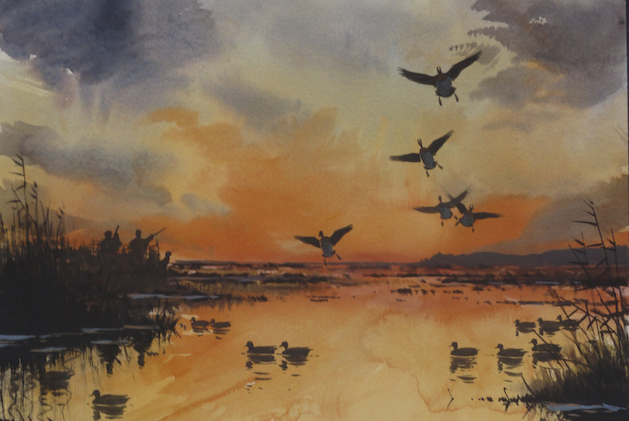
Wigeon-like shapes charged overhead before banking sharply and coming back to the Guns
Orchestra
The decoys looked excellent bobbing on the water and Otter, Tom’s retriever, sat shivering in anticipation beside us. The sequence of events began that all fowlers are familiar with. As the night closed in, the haunting cries of curlew were replaced by the swoosh-swoosh of lapwings flighting past and, finally, the whistles and quacks of wigeon and mallard. Fortunately, Tom is handy with his ‘orchestra’ of duck calls.
Before long, two wigeon appeared against the night sky, struggling into the wind. Tom and I had ample time to settle our beads on each bird and with a simultaneous shot Otter had two retrieves to make.
Our good start continued. Apart from a teal that proved too quick for either of us to fire a shot, our success rate was high. Three wigeon-like shapes charged overhead before banking sharply and coming back at us. As they prepared to land, we pulled off the same trick from earlier, but I missed the third, right over my head.
As Otter swam back with the first of the birds, we realised its considerable beak and identified it as a male shoveler duck. But it was then, just as our haul was growing, that the flight tailed off. Only one more party of wigeon visited, but they came in below the horizon and escaped into the dim, without being fired upon.
Yet we were determined to remain in the elements so long as we could hear ducks moving around. There was only one part of the sky that was light enough to take a shot into now, so we were both fixed upon it, searching for silhouettes.
Delicious
A little while later, a mallard betrayed its position with some quacking and began descending to our decoys. It took us four shots but the bird fell almost at our feet, giving Otter one last easy retrieve. We hauled the decoys in and retreated from the sodden marsh with our well-earned bag of five ducks. I was particularly happy because I’d just sourced a few delicious, free meals for university.
By the end of the week I had my housemates trying snipe on toast, roast duck and pheasant curry. I made sure to highlight the lack of plastic packaging, food miles or chemically treated meat and several of my friends expressed a real interest in shooting. On the whole, my cooking went down a treat, but I might not serve them the shoveler just yet.
Related articles
News
A sound decision as moderators to be taken off licences
The Government has finally confirmed what the shooting community has long argued – that sound moderators should be removed from firearms licensing controls
By Time Well Spent
Gamekeeping news
News
Devastating effects of keepers downing tools
A 20-year experiment highlights the dramatic decline in our red-listed birds after predator control ends, proving the vital role of gamekeepers
By Time Well Spent
Manage Consent
To provide the best experiences, we use technologies like cookies to store and/or access device information. Consenting to these technologies will allow us to process data such as browsing behavior or unique IDs on this site. Not consenting or withdrawing consent, may adversely affect certain features and functions.
Functional Always active
The technical storage or access is strictly necessary for the legitimate purpose of enabling the use of a specific service explicitly requested by the subscriber or user, or for the sole purpose of carrying out the transmission of a communication over an electronic communications network.
Preferences
The technical storage or access is necessary for the legitimate purpose of storing preferences that are not requested by the subscriber or user.
Statistics
The technical storage or access that is used exclusively for statistical purposes.
The technical storage or access that is used exclusively for anonymous statistical purposes. Without a subpoena, voluntary compliance on the part of your Internet Service Provider, or additional records from a third party, information stored or retrieved for this purpose alone cannot usually be used to identify you.
Marketing
The technical storage or access is required to create user profiles to send advertising, or to track the user on a website or across several websites for similar marketing purposes.

